Once established these 25 best Drought Tolerant Fruit Trees need very occasional or no supplemental watering to grow and produce fruits.
In hot and arid areas availability of water even for regular chore is difficult sometimes, forget about watering plants. If you live at such a place or really a busy person who can’t about trees growing in your yard, then these low maintenance and drought tolerant fruit trees are perfect for you.
Also Read: Best Drought Tolerant Flowers
1. Jujube
Botanical Name: Ziziphus jujube
USDA Zones: 6-9
Other Names: Chinese Date, Indian Plum, Malay Jujube, Indian Cherry, Korean Date, Ber, Dunks, Masau
With the fruits similar to figs in size an apple in taste with some tanginess, this phenomenal fruiting tree can reach a height of 40 feet. Plus, if you do not pluck the fruit and let it become dry and shriveled up, it’ll last forever without any preservative. Also, note that the fruits of the Chinese jujube varieties are sweeter and bigger than their Indian cousins.
Growing Tips:
Locate it in full sun and well-draining sandy-loamy soil, it grows well in poor hard clayey soils as well. Remember, Indian jujube varieties are more drought and heat tolerant than Chinese varieties.
Also Read: How to Grow a Jujube Tree
2. Dragon Fruit
Botanical Name: Hylocereus undatus
USDA Zones: 10-11
Other Names: Cereus triangularis, Thanh long, Strawberry Pear, Cactus fruit, Night blooming Cereus, Jesus in the Cradle
It tops the list of exotic fruits and why not! The bright pink outer shell with scales give the fruit a unique, appealing look. Fruits are also rich in fiber, potassium, antioxidants and vitamin C making it invaluable.
Growing Tips:
Being a cactus, it requires well-draining soil with lots of sunlight for optimum growth. Water only when soil turns dry to touch. It needs sturdy support as its a vining plant.
Also Read: How to Grow Dragon Fruit
3. Prickly Pear Cactus
Botanical Name: Opuntia ficus-indica
USDA Zones: 9–11
Other Names: Indian fig opuntia, Barbary fig, cactus pear, Spineless cactus, Nopal Cactus
Valued both for its ornamental beauty and tropically flavored fruits. Juicy fruits also have a thirst quenching quality to them. Ranging from white to yellow to orange the flowers are very showy and charming.
Growing Tips:
Apart from tropical regions, it can do well in mild climates and can tolerate some cold (-8 C) and wet climates. For a fruiting and thriving plant locate it in a sunny spot.
Also Read: How to Grow Prickly Pears
4. Pomegranate
Botanical Name: Punica granatum
USDA Zones: 7-10
Other Names: Punic apple, Granatapfel, Melograno, Melagrana, Anardana, Anar, Dadima, Fruit du, Pomme Grenade, Punica granatum, Shi Liu Pi
Pomegranate is actually a shrub, which can be trained as a small tree. It doesn’t grow above 12-15 feet tall. Given proper care, it can stay alive for more than 200 years. The fruit is delicious and juicy and packed with antioxidants.
Growing Tips:
It does well in full sun to partial shade in the slightly acidic to neutral potting medium. If growing on the ground, in the initial growing period, water it regularly, but once the tree has established deep watering once in a week in a warm climate is sufficient.
Also Read: Growing Pomegranates in Containers
5. Grapes
Botanical Name: Vitis vinifera
USDA Zones: 7-10
The grapevine is very common and grown commercially for wine production, juice production, and table grapes. It’s found in recent research that grapevine is very drought resistant and can tolerate heat easily.
Growing Tips:
Grow it where it can receive 6-8 hours of sun each day in a well-draining sandy or loamy soil. Pruning is crucial for maximum yield.
Also Read: How to Grow Grapes in Pots & Care
6. Kei Apple
Botanical Name: Dovyalis caffra Warb
USDA Zones: 9-11
Native to South Africa, it is a small to medium size tree and can grow to a height of 6-9 meters tall. The fruit is ovate and posses an acidic flavor which leaves an extremely acidic and funny but pleasant taste in the mouth. Also, the fruit is highly aromatic and used in jams, sorbets and fruit salads.
Growing Tips:
It can grow in highly saline soil and is also drought resistant. You can locate it in full sun or partial shade in a well-draining growing medium.
Also Read: Best Fruits to Grow in Pots
7. Oriental Persimmon
Botanical Name: Diospyros kaki
USDA Zones: 5-11
Other Names: Persimmon, Oriental Persimmon, Japanese Persimmon, Kaki, Tendu, Tendu Fal, Sharon Fruit, Divine Fruit
Don’t mistake the fruits for tomatoes; they might look alike but are different. It’s the national fruit of Japan and why not it’s nutritious and very unique in taste. In winters, the bright orange-red fruits dangling on bare branches are enough to add winter interest to any landscape.
Growing Tips:
Prune when the trees are young for optimum fruiting. Will do well in neutral to slightly acidic soil. It can tolerate short drought periods but thrive best with regular watering. There are many varieties available for both cold and hot climates.
Also Read: Best Drought Tolerant Plants
8. Fig
Botanical Name: Ficus carica
USDA Zones: 8-11
Other Names: Edible Fig, Common Fig, تين عادي, Anjeer, פיקוס התאנה
Figs produce deliciously sweet fruits that are rich in potassium, calcium, and other dietary fibers. They are easy to plant in both garden and containers. This small fruit tree or large shrub can tolerate short periods of seasonal drought due to its large deep roots.
Growing Tips:
Put your fig tree at a spot where it can receive around 6-8 hours of direct sun. It prefers warm climatic conditions, but go for more cold-hardy varieties such as Chicago Hardy if you live in colder regions.
9. Natal Plum
Botanical Name: Carissa macrocarpa
USDA Zones: 9-11
Other Names: Large Num-Num, Amatungulu, Noem-Noem
Dark green foliage, spiny branches, and white star-shaped aromatic flowers enhance its ornamental beauty. The mouthwatering red fruits are rich in vitamin A, B, and C and can be used in various soup, pie, sauce and salad recipes.
Growing Tips:
For optimum results plant it in full sun. It is adaptable to harsh conditions like heavy shade, moisture, drought, heat, and intense sun. It can’t tolerate cool winters, so it’s a good idea to grow it in a container in temperate zones.
10. Feijoa
Botanical Name: Acca sellowiana
USDA Zones: 8-11
Other Names: Pineapple Guava, Guavasteen, Guayabo Del Pais, Brazilian Guava, Fig Guava
Reddish white Flowers, as well as guava-like fruits, both are edible. It bears reddish fruits in fall which are fragrant and contrast well with the dark green foliage. Its self-pollinating nature and manageable size make it perfect for small space.
Growing Tips:
Can tolerate temperatures as low as 12 F (-11 C). Fertilize once in every two months with a light and well-balanced 8-8-8 fertilizer. Young trees require weekly watering whereas watering needs recede as the tree matures.
Also Read: How to Grow Feijoa
11. Guava
Botanical Name: Psidium guajava
USDA Zones: 9b-11
Other Names: Amrood, Brazilian Guava, Common Guava, Feuille de Goyavier, Goiaba, Goiabeiro, Goyabe, Goyave, Goyavier, Goyavier du Brésil, Guaiaba, Guaiava, Guavenbaum, Guayaba, Guayabo, Guayave, Jambu Batu, Koejawel, Lemon Guava, Mansala, Red Guava, Yellow Guava
The small-sized guava tree is an ideal choice for container gardeners as well. It produces nutritious fruits that taste like a combination of strawberries and pears, though really soft while chewing. Fruits are eaten fresh or used widely in jams, juices, and chutneys.
Growing Tips:
It bears fruits year round at regular intervals in tropics. Protection from cold and frost is necessary to keep the plant alive. Soil rich in organic matter gives the best results. Requires deep and regular watering when the plant is young. Check out our guava growing guide to learn how to grow it.
12. Tamarind
Botanical Name: Tamarindus indica
USDA Zones: 9-11
Other Names: Imlee, Imli, Tamarin, Tamarindo, Tamarindus indica, Tamarinier, Tamarinier d’Inde, Tintiri
This is the fruit tree that thrives on neglect. Widely used in cuisines for flavoring and in many Asian curry and chutney recipes, its pulp is a key ingredient. Plus, it is used in traditional medicines because of the laxative properties and effectiveness against bacteria and fungi.
Growing Tips:
Make sure the climate is warm enough and sunny if you plant it outdoors. It prefers deep loamy soil with good drainage. A well-established tamarind tree can tolerate long periods of extreme drought. In cool climates, you can keep it indoors in winters while growing it in containers. It’s also grown as a bonsai.
Also Read: How to Grow Tamarind Tree
13. Karanda
Botanical Name: Carissa carandas
USDA Zones: 9b-11
Other Names: Bengal currant, Christ’s thorn, carandas plum, karonda
It produces a berry-sized fruit that is extremely tart and is commonly used in curries, pickles, and spices in the Asian countries. Priced for its medicinal uses in Ayurveda because it treats ailments such as stomach pain acidity, indigestion, fresh and infected wounds, skin diseases, urinary disorders, and diabetic ulcer.
Growing Tips:
It flourishes best in hot climates and requires full sun to part shade. This woody shrub or small tree needs sturdy support in the beginning when it’s establishing.
14. Date Palms
Botanical Name: Phoenix dactylifera
USDA Zones: 9-11
Other Names: Dade, Date, Datte, Dattel, Datter, Dattero, Dattier, Datil, Edible Date, Kharjura, Palmera Datilera, Palmier Dattier, Palmier-Dattier, Phoenix dactylifera, Tamera
Bring the tropical feel of deserts to your backyard with this low maintenance palm. For growing in a container and indoor plantation go for Pygmy date palm, which is smaller in height in comparison to the true date palm.
Growing Tips:
In winters, water a couple of times in a month, whereas in summers, water weekly. It suffers damage from frost and cold so provide shelter if growing in a cool climate. Constantly look out for common pests such as mites, aphids, scale, whitefly, and mealy bugs.
15. Mango
Botanical Name: Mangifera indica
USDA Zones: 10-11
It’s not just by chance that mango became king of fruits. The delicious juicy fruit backs up this title with the rich flavor and satiating aroma. Consuming this fruit has excellent health benefits as it boosts immunity, lowers cholesterol, good for eyesight, etc.
Growing Tips:
Fruit production is best in full sun, so locate the plant likewise. Avoid really wet and heavy soil, rest all are suitable. When the plant is young, water regularly, established mango trees are extremely drought tolerant. Learn how to grow a mango tree in a pot in our guide here.
16. Moringa
Botanical Name: Mangifera indica
USDA Zones: 10-11
Other Names: Drumstick, mallungay, munga, munge, horseradish tree, drumstick plant
A wonder plant when it comes to medicinal uses and benefits. Fruits, seeds, flower, leaves, and bark all are utilized in making medicine. Because of its high content of calcium, potassium, vitamin A, C, and antioxidants, its also called a miracle tree.
Growing Tips:
It’s a wild tree, which can tolerate drought and poor soil easily. To encourage fruiting, cut back the older branches and flowers in the first year. Check out our growing guide to learn more.
17. Phalsa Fruit
Botanical Name: Grewia asiatica
USDA Zones: 9-11
Other Names: Falsa, sherbet berry
Phalsa is a large shrub or small tree that can be grown in containers. It produces berries akin to grapes in shape, size, and taste. Rich in antioxidants, Vitamin C and other nutrients you can prepare delicious phalsa juice or consume the berries raw.
Growing Tips:
It prefers the warm climate but can tolerate the light frost. Plant it in containers so that you can move it indoors in winters. It’s a drought tolerant plant but adequate watering during fruiting is required.
Tip: For growing phalsa in containers, choose dwarf busier varieties.
18. Asian Pears
Botanical Name: Pyrus pyrifolia
USDA Zones: 5-10
Other Names: Chinese pear, Nashi pear, Japanese pear, Korean pear, Taiwanese pear, Zodiac pear
Not only does it inherit the sweetness and juiciness of common pear but it has also got the crunchiness of an apple. You can benefit from the goodness of this fruit for months as it’ll stay edible for a long time in the refrigerator.
Growing Tips:
It needs regular and deep watering when the plant is establishing. While it can tolerate a season of drought easily, keeping the soil slightly moist let the plant remain in optimum condition.
19. Carob Tree
Botanical Name: Ceratonia siliqua
USDA Zones: 9-11
Other Names: St. John’s Bread, Carob, Locust Bean, Locust Tree, خَرُّوبٌ, חרוב, Carob Bush
The goodness of chocolate without the added calories is the reason why it’s considered as a healthy substitute for chocolate. Growing up to 10 meters tall it’s a deciduous tree, and the canopy of foliage provides welcome shade in hot tropical regions.
Growing Tips:
Can grow in many soil types such as deep sandy, loamy or even arid soil but won’t tolerate acidic substrate. Learn to Grow a Carob Tree in our growing guide.
Also Read: Best Chocolate Scented Flowers
20. Mamoncillo
Botanical Name: Melicoccus bijugatus
USDA Zones: 10-11
Other Names: Chenette, quenette, gnep, guinep, guaya, quenepa, kenip, genip, ginnip, kenepa, knippa, Spanish lime, limoncillo
It’s a tall, erect tree that can reach a height of 25 meters and produces juicy fruits with hard green shells that resemble small unripe mango. The inner soft pulp is somewhat sweet and sour.
Growing Tips:
Frost is the death of this plant. It’s very drought tolerant and doesn’t mind poor soil. Check out every information you need on Growing Mamoncillo in our article.
21. Bael Fruit
Botanical Name: Aegle marmelos
USDA Zones: 10-12
Other Names: Arbre de Bael, Bael Tree, Bel, Bel Indien, Bengal Quince, Bilva, Bilwa, Cognassier du Bengale, Coing du Bengale, Indian Bael, Manzana de Piedra, Membrillo de Bengala, Pomme du Bengale, Shivaphala, Stone Apple
It gets this unique name “Wood Apple” because of the hard woody outer shell of the fruit. It is native to the Indian subcontinent and extremely drought tolerant. The fruits are a rich source of fiber and vitamin C. *It holds a religious value in Hinduism.
Growing Tips:
Stake the plant when it is young to help it grow straight. Hot summers and mild winters are what it needs. Avoid the location with water stagnation.
22. Black Plum
Botanical Name: Syzygium cumini
USDA Zones: 8-11
Other Names: Black Plum, Duhat, Eugenia cumini, Eugenia jambolana, Indian Blackberry, Jambolan Plum, Jambolao, Jambose, Jambosier, Jambu, Jambul, Jamum, Java Plum, Jumbul, Prune de Java, Rose Apple, Syzygium cumini, Syzygium jambolanum, Syzygium jambos
It can live for more than 100 years, quite a long life! Also, it can grow up to 30 meters (100 feet) tall. The purple-colored ripe fruits are juicy and posses sweet flavor with a hint of sourness. These rare fruits are extremely nutritious and beneficial for people who have diabetes. Find out its medicinal benefits here.
Growing Tips:
Keep the soil moist for seedlings and young plants, reduce the watering once it is established. It can grow in a wide range of soils and requires moderate shade to full sun.
23. Ice Cream Bean
Botanical Name: Inga edulis
USDA Zones: 9-11
Other Names: Ice-cream-bean, Joaquiniquil, Cuaniquil, Guama, Guaba
The beans in the foot long pod are surrounded by white and smooth cotton-ish pulp that resembles the taste of vanilla ice cream. Yummy isn’t it! The beans are used in traditional medicines for treating dysentery, diarrhea, and reliving arthritic joints pains.
Growing Tips:
A warm location and a spot that receives sunlight throughout the day is where it’ll do best. It’s drought tolerant after establishment but will produce bountiful harvest if you water it once in a while.
24. Loquat
Botanical Name: Eriobotrya japonica
USDA Zones: 8-11
Other Names: Japanese medlar, nispero, Maltese plum, Japanese plum, 盧橘, pipa
If you are looking for something new to plant go for Loquat. It adds ornamental beauty to any landscape with the large glossy leaves and bright fruits. Jams, jellies, preserves, cobblers, and pies can be prepared by the fruit.
Growing Tips:
This large shrub or small tree can be grown in containers as well, the height will be reduced to 6-8 feet. It can live well in mild temperate zones as well and tolerate temperature down to 20 F (-6 C). It’s drought tolerant but for quality fruits, water regularly and deeply, especially in summer.
25. Elephant Apple
Botanical Name: Limonia acidissima
USDA Zones: 9-12
Other Names: Wood Apple, kavat, kabith, kavath, velakkaya, divul, kvet, kawis, kawes, kaitha, mokey fruit, curd fruit, ma-khwit
This fruit tree is native to India and Sri Lanka and found naturally in other South East Asian countries. It’s one of the best drought tolerant fruit trees, which can grow quite tall. The taste of its fruit is rare–very acidic and sweet. It resembles the bael fruit in shape and size.
Growing Tips:
It requires a warm, arid climate to grow and thrive. It requires regular watering when it’s young, once established, it thrives on neglect.



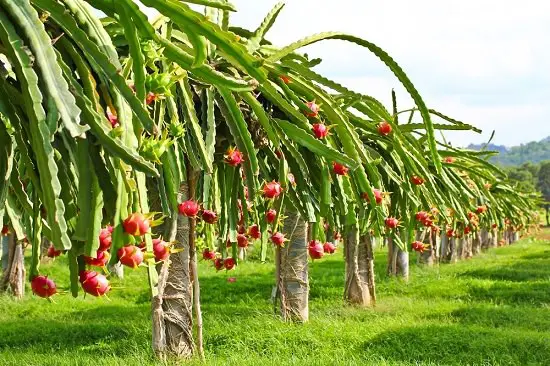


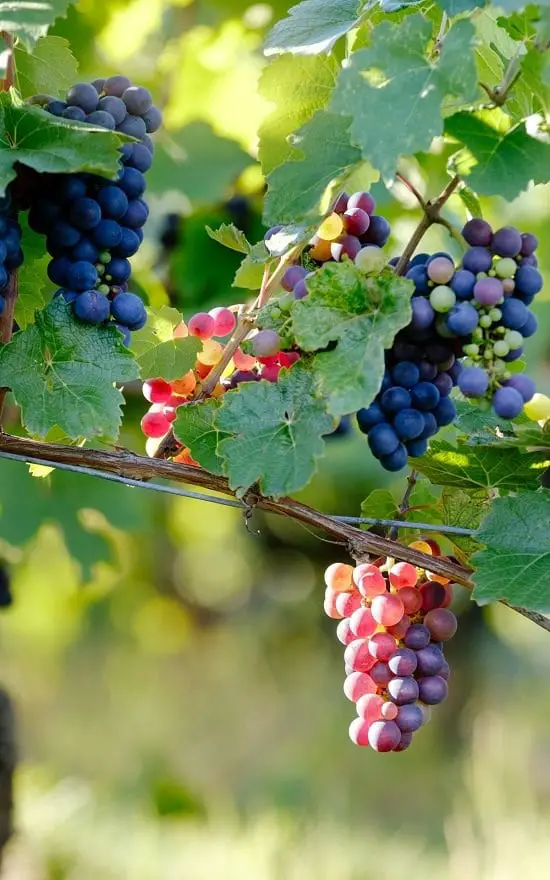




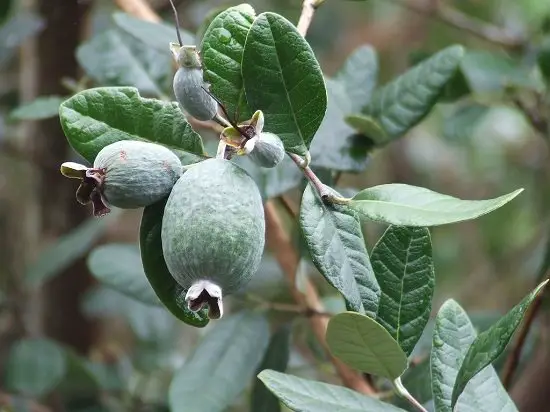
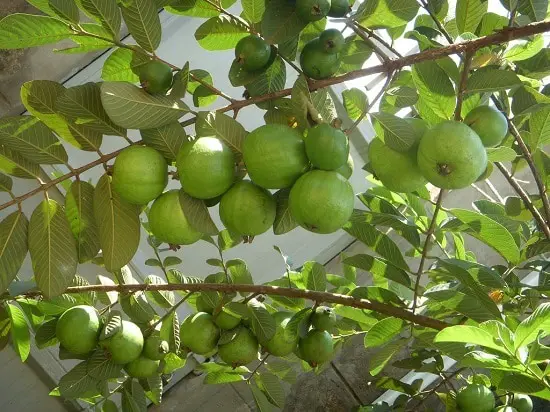

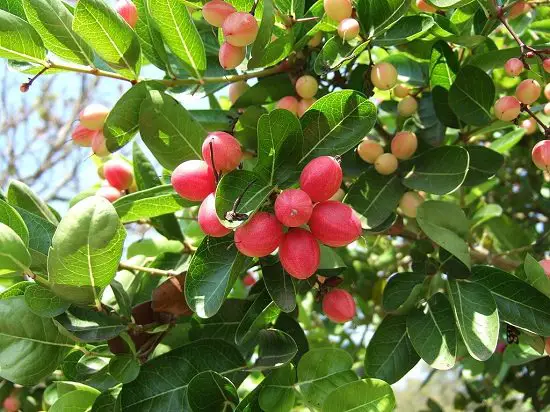
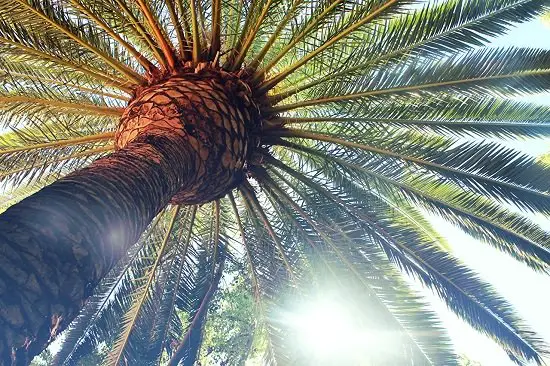

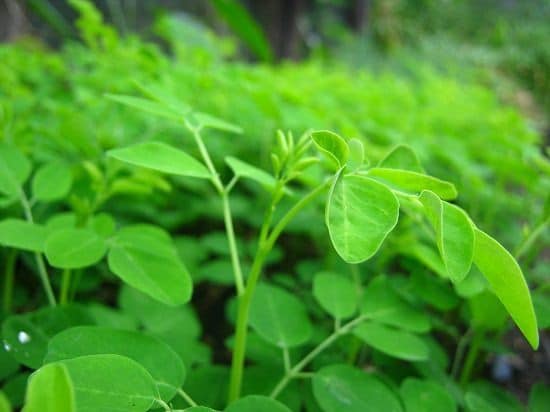

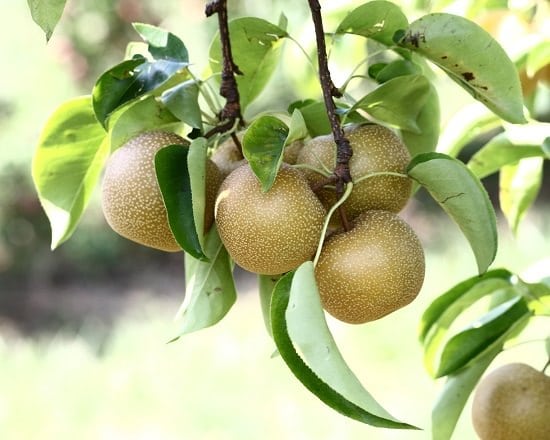
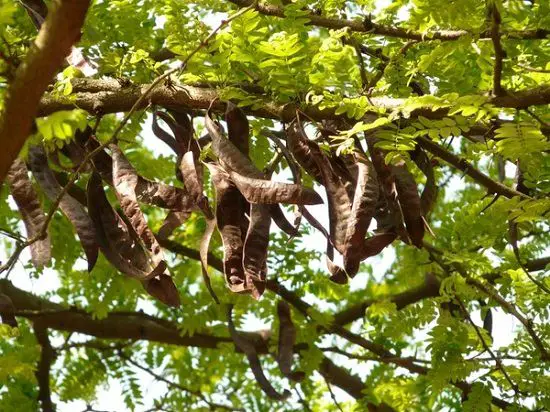
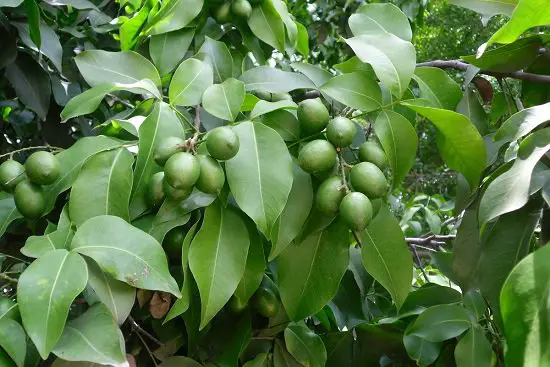
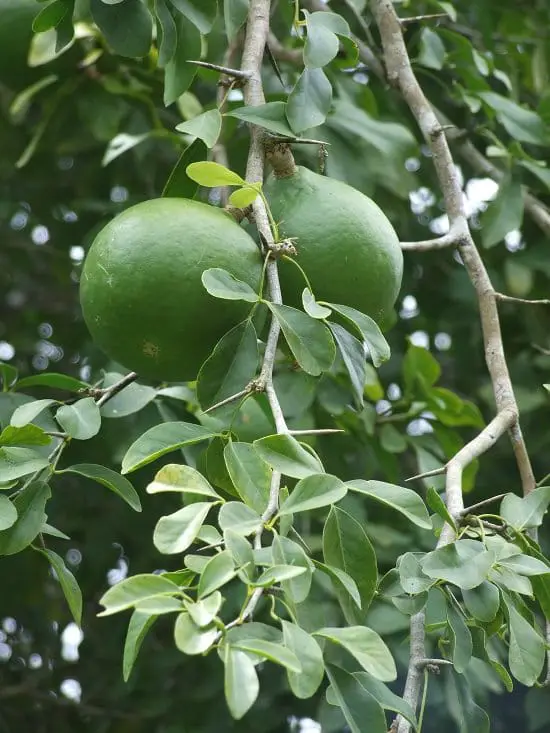
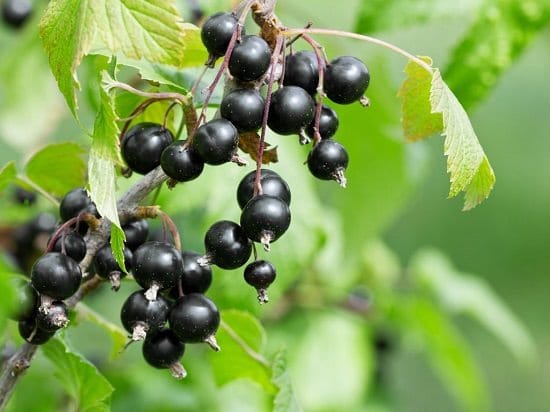

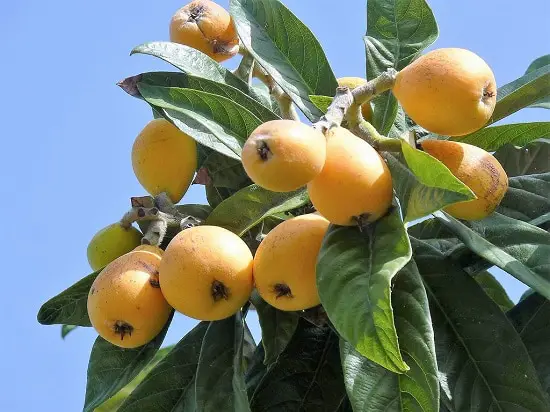

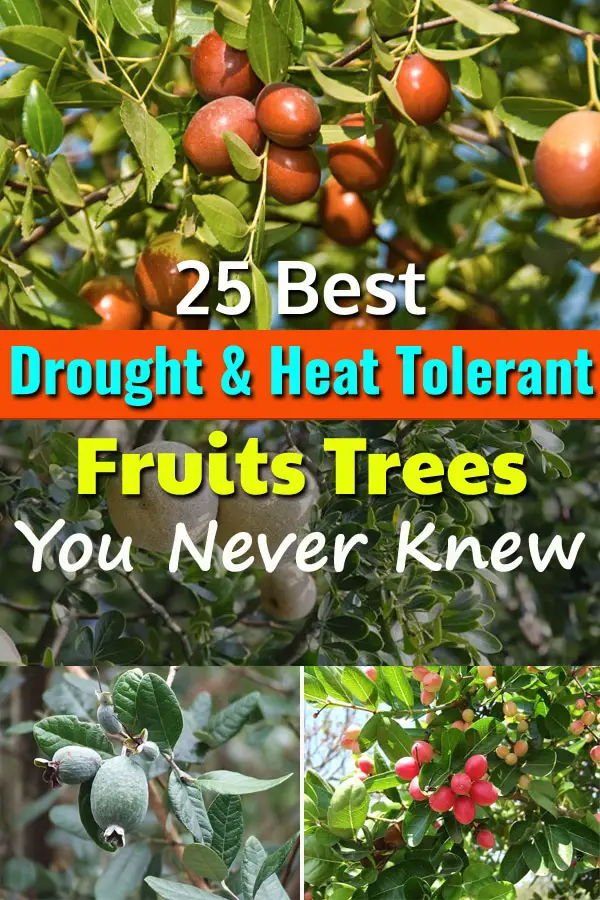

Your writing seems to be totally an inspiring one. Thank You!!
OMG I love your websites, they are so useful and give off so much information, I love it! Thank you for the sites.
Can I know where we will find all these plant or seeds to grow in my field, I need all these trees to plant. If any info please let me know.
Where can we get these trees ? We live in Fallbrook which is very dry Northern San Diego county. Water is very expensive there. These tree will certainly add shade and value to our home. Thank you for your inputs….
Why is water expensive in San Diego. Are you on city or well water?
I like the post, but the photo of the Carob Tree is wrong jajaja As somebody with several “Algarrobos”, as we call them in Spain, I know for sure that is some other leguminose tree.
It is actually the correct picture of the Carob tree. I grew up eating Carob of exactly that same tree in my native country of Tunisia. Yummy memories
Looks like a honey locust, Gleditsia triacanthos. Carob trees have broader leaflets and thicker pods.
Probably pictured is Carob related (Prosopis pallida), but from from South America and not Mediterranean.
Good I have know Loquat today. In our language Kamba ( Kenya) we call it Ndunda. Translation- something sweet.
I amazed at looking and reading your blog. I came across the real blog what I was thinking about.